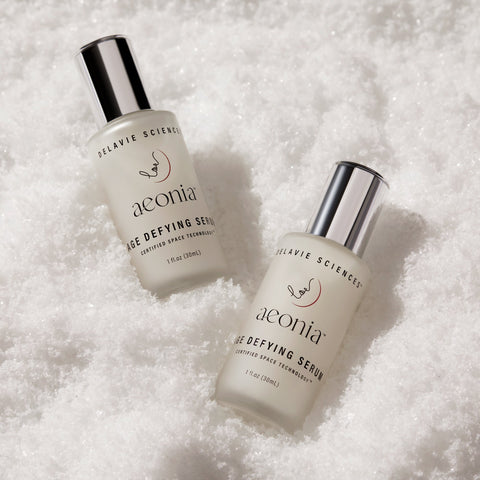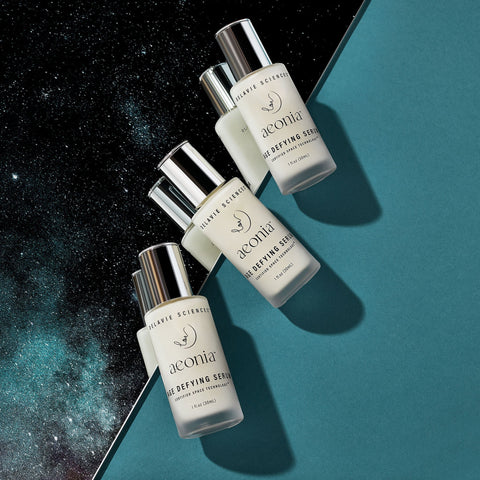ENVIRONMENTAL STRESSORS
Once you know how the environment can damage your skin, you can take effective steps to fight back.
Sometimes it may feel like the environment is out to get your skin. UV rays, air pollution, “blue light,” stress (and more!) all work to break down collagen and degrade your moisture barrier. So, how exactly do these environmental factors impact your skin and what can you do to fight back?
The Sun Does the Most Damage
You may love the sun, but it doesn’t love you back. In fact, several signs of what you might consider to be normal aging—wrinkles, age spots, lines—are caused by exposure to the sun. Over time, UV rays trigger the production of free radicals in the skin that lead to DNA damage and the breakdown of collagen and elastin, according to the World Health Organization (WHO). Elastin is a protein that forms the elastic connective tissue found especially in the dermis of the skin. When elastin breaks down, your skin literally loses its elasticity--the ability to stretch and snap back into place. That’s when you begin to see sagging, stretching, and a potential increase in bruising and tearing.
UV rays also stimulate melanin production, which can lead to skin discolorations and spots. The cumulative effects of sun exposure can eventually lead to the formation of non-melanoma skin cancers, including basal cell carcinoma and squamous cell carcinoma.

The Negative Power of Pollution
Air pollution does more than impact your lungs: it can create similar free-radical damage as that seen in UV rays. The particulate matter, nitrogen dioxide, hydrocarbons, and ozone found in the air creates oxidative damage to the skin that can cause inflammation. Perhaps the worst part of pollution is particulate matter (PM), which is a mixture of small particles and liquid droplets, such as organic chemicals and soil or dust. PM can stimulate skin inflammation and weaken the synthesis of collagen. Like UV rays, this degradation can cause fine lines, wrinkles, sagging, and blunt the positive impacts of collagen and elastin.
The Dangers of "Blue Light"
You may not be aware of it, but the light from your devices—including your screen, laptop, tablet, or smartphone—has the potential to prematurely age your skin. Visible light, or “blue light,” is a high-energy wavelength (HEV) that some researchers say can increase free radical formation in the skin. While research is still ongoing, current data suggests that staying in front of screens all day or even a quick selfie might spur premature aging.
That said, there are steps you can take to fight back.
Battling Back
Now that you know about the damage the environment can do, here are some ways you can fight its impacts:
- Applying broad-spectrum sunscreen daily can help prevent UV light from reaching your skin. Depending on the type you choose, sunscreen can either absorb UV light or reflect it.
- Washing your face every evening with a gentle cleanser to remove dust, bacteria, dead skin cells, and dirt that has accumulated throughout the day.
- Beyond washing, a night skincare routine can keep contaminants such as debris and dust from penetrating the epidermal layer, and help the skin heal and hydrate. Consider, for example, using a hydrating, antioxidant face serum such as the Aeonia Age Defying Serum.
- Add vitamins C or E to your morning routine. Whether as a topical product or supplement, these antioxidant-rich vitamins can help neutralize free radicals. The Aeonia Eye Refresh contains Vitamin E to restore hydration in the under-eye area.
There’s no question that the environment can wreak havoc on your skin. But understanding what its effects are and putting the right care in place can put you in control of your skin’s future.
References:
- “Radiation: The Known Health Effects of Ultraviolet Radiation,” World Health Organization
- “Pigmentary Disorders,” Topical Dermatology
- “The Best Skin-Care Ingredients and Products to Shield Against Environmental Damage,” Everyday Health



